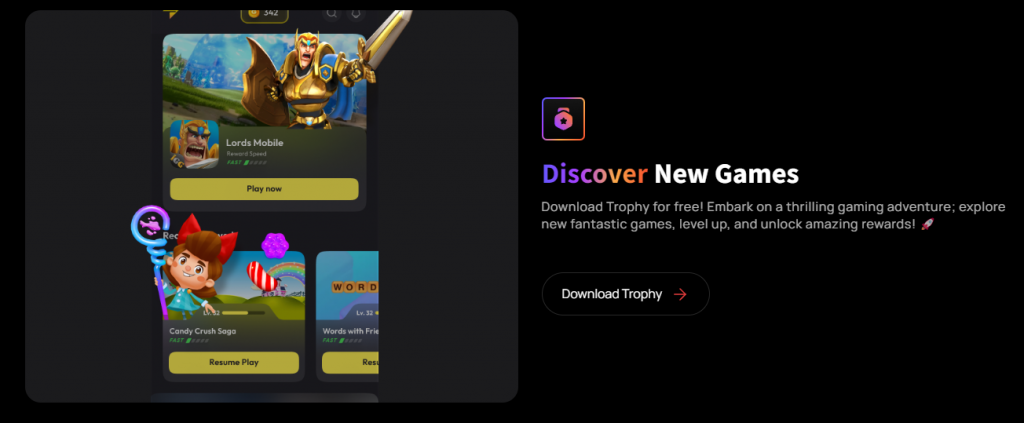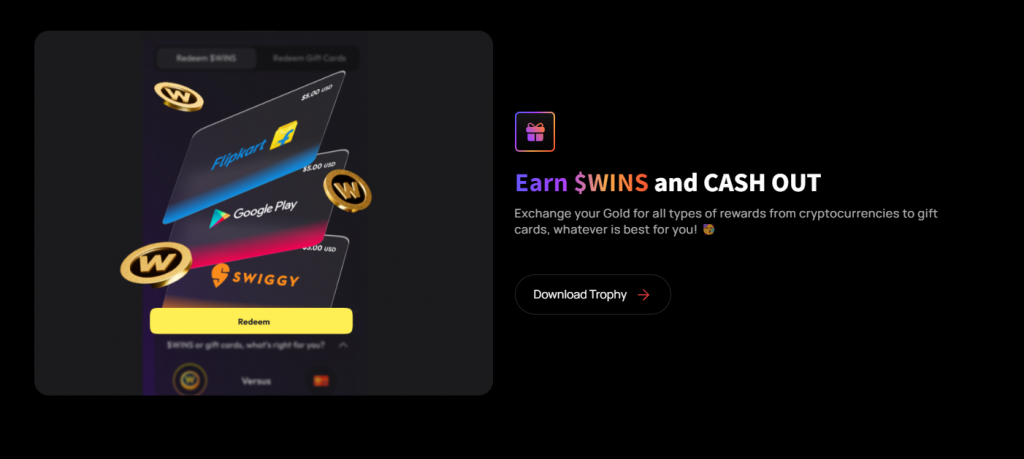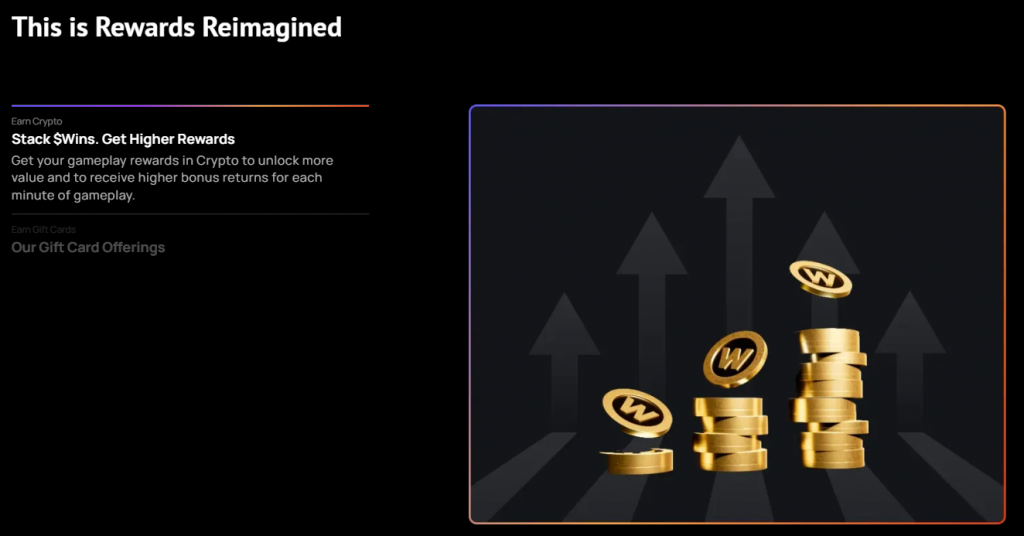Why web3 gaming rewards app Trophy gives away 98% of its revenue

Sign up to our Substack, follow us on Twitter, and connect with us on LinkedIn.
In the latest episode of his Blockchain Gaming World podcast, editor-in-chief Jon Jordan talks to serial entrepreneur Kevin Chou about the Superlayer investment incubator and its latest project gamer ID and rewards platform Trophy, which has just gone live in India.
This interview has been edited for length and clarity.
BlockchainGamer.biz: Can you give us a quick background of your career?
Kevin Chou: I’ve been building a web3 for about five years, so I have gone through a lot of bull markets, bear markets, bull markets again, and now bear markets again. Prior to that, I started building free-to-play games in 2006. Before blockchain-based games that was really the last major business model shift in gaming. I built a company called Kabam, ran it for 11 years, grew it to about $400 million in revenue, and exited to Korea’s biggest gaming company, Netmarble.
And, most recently, for the past year I’ve been really focused on a project called Trophy, which is a gaming identity and loyalty platform on mobile devices.
What’s the biggest obstacle for blockchain gaming to go mass market?
I think our biggest obstacle is that blockchain gaming needs to move to mobile. The mobile revolution was really the last. We talk about gaming today as reaching over 2.5 billion people. And the reason it reaches over 2.5 billion people is very much because of the smartphone.
Mobile has expanded the market by 20X. The blockchain gaming world started with some PC client games and then explored some browser-based games but mobile is the big one for the market to really go mass market and get to tens of millions of players per game.
Do you think the recent moves by app stores are positive then?
It’s a huge movement for the whole industry to have the beginnings of clarity. I think the policies need a little bit further to go but it’s acknowledgement by Apple and Google, who unfortunately have a stranglehold on the industry, to say there’s certain things that we’re going to permit. There’s disclosures of transparency that developers need to provide to the players. And then from an advertising standpoint, there’s going to be a bunch of rules as well. So I think it’s a big step in the right direction. It legitimizes the industry so that’s a big move.
We’re going to need to continue to push that boundary for the blockchain gaming market to take hold though. And there’s a lot of things happening beyond just blockchain games. What’s happening with Epic and Apple is obviously pushing the whole games industry forward for all of mobile games. There’s a lot of tailwinds for things like antitrust and Apple, Google overstepping their bounds and being a duopoly on a global basis.
Can blockchain help for issues things like UA?
Data privacy is a real concern. I can tell you that in the early days of mobile advertising, it was really the wild west. There were lots of bad actors in terms of what data was being collected, how that data was being sent to intermediaries and data brokers, and how it was being used. I do think there’s been some positive steps on that front.
Although, perhaps, the pendulum swung too far to the other side. Now it’s just incredibly hard to track ROAS. You really can’t get much data at all. On the blockchain gaming side, using blockchain and getting explicit permission from players to get them to share their valuable data and time, understand exactly what they’re giving up, and being rewarded for that is something that is at the heart of what we’re trying to do at Trophy.

We’re not trying to be an advertising network per se. We’re trying to help players build their gaming identity and then for game publishers to say ‘Jon is a really valuable player. He’s providing economic value and engagement value and potentially social value into my game. And I want to reward Jon with certain types of offers to come and try out my new game’.
Our belief in Trophy is that your profile, your identity is valuable and we want to help you monetize that explicitly with your permission and have you share in the rewards of the platform.
Can you talk about Superlayer, which is the company Trophy was incubated from?
So what happened after I sold Kabam was I started an esports company and worked with some great partners and investors. But I didn’t want to run that company. I said ‘let’s find another CEO and team to go run this thing’. But my investors and partners said, ‘Why don’t you run it for the first year or two years, get it off the ground and then we’ll do a CEO search after that. It’ll be easier to find somebody that can run it after that’.
That was the first time I founded a company explicitly with the idea that I’m going to leave the CEO seat and then find somebody great who could take it to that next level. Because that model worked out so well, I did it again for a company called Rally, which is a web3 social platform, and then a company called Forte, which is a game development platform.
So that was the impetus behind SuperLayer. I would form an incubator, find really great entrepreneurs that had done incredible things in a non-web3 world, helped them build the first web3 gaming company, sometimes being the initial founding CEO, sometimes being on the board. But in all cases I would be pretty heavily involved and trying to help entrepreneurs with a new idea in what could work in web3 gaming.
Trophy was very much in that model. There were two great founders, Riaz Lalani and Travis Anderson. Riaz had spent time at Zynga, as well as a bunch of fantasy sports gaming platforms. Travis had spent time at Unity and Ironsource, on the gaming side of those businesses. The three of us and a bunch of other folks at SuperLayer came together with the idea behind Trophy. It’s been about a year since we started it, and we’re really excited about the results that we’re seeing so far.
There are a number of companies doing similar things. What’s Trophy’s differentiation?
I think it’s a combination of two or three things. It’s the team that we’ve assembled in terms of having real product and technology expertise, as well as what I’ll call a strategic partnership side with Travis. He’s worked with game publishers for a long time. And then myself and Mike Li and a few others that founded Kabam and been in the game industry for a couple of decades.
The second is having built real technology and software. A lot of people start a community on Discord. Starting a community and getting the community fired up is not easy but in the bull market, there were a lot of communities that sprang up and then fragmented or became very complex DAOs and sub-DAOs. As communities get larger they tend to fragment. It’s almost an inverse scale benefit as you get to a certain size.

There’s a lot of hard work that’s required to build a technology product and scale it. If you look at the product we’ve made, we made it super easy for people to get into a web3 experience and use a lot of interesting technology to make it such that somebody can get into this experience without having to know anything about web3. But somebody who’s a full web3 nerd can claim their private keys and really take control of the wallet.
For someone who doesn’t know anything about web3, we introduce the experience in a gradual way. For a web2 user, if they’ve been playing 20 hours of games and earned $5, they can get an Amazon gift card. They might not want anything to do with crypto. They still might be a very valuable player. When they become more comfortable with the product and more involved in the community, they might want to participate in the token aspects of the economy. So we believe that there’s a real product and technology differentiation in terms of what we’ve built.
The third one is in the bear market. Teams that can put some capital together and have money to invest in community building, software development, user acquisition and go to market activities, these are things we’re able to invest in through the bear market because we’re long-term builders in the web3 world. Our investors and partners know that we’re going to be here for the long term and take a really good shot at this.
So put all those things together, and while I think there’s going to be multiple winners in this space, I certainly think what we’re doing at Trophy is very special.
Can you explain Trophy’s underlying business model?
When we were running Kabam, you could see if a person had spent a thousand dollars on a game and then you could buy ad impressions against that sort of user. It would be an astronomical rate. You’d be willing to pay $50, $100 in some cases, to get that user to try out your game. That was just what the math would break down to on a ROI basis over time.
But the user would see none of that benefit. They didn’t understand their data was being sold and that they were being targeted in that way. And yet getting an ad in front of that user was an incredibly valuable thing. And certain companies made a lot of money doing that type of targeting.

So with Trophy, we want to take that model and flip it around and say ‘As a player, you’re going to be in charge of your identity. You’re going to be in charge of your playing history. And if people want to put offers in front of you to go try out their new game, you’re going to be able to build up that identity.
And we try to pay out 98% of the revenues we get from the publisher to the user themselves, and take that extra 2% and invest it into the overall token network.
So it’s a really interesting model where we just say we’re trying to be a layer that facilitates game publishers rewarding players for valuable behaviors. Those valuable behaviors include things like spending. It includes things like downloading a game, and playing the game and getting to a certain level within the game.
We help the player understand how they’re building that profile. Today it’s mobile games, but we think that over time, having a much bigger vision and extending to console, PC games, just any game, potentially even VR games, you know, going forward. We want this to be a hub where you can truly build up your identity.
It’s a really simple way to turn this model around and help players get paid for the marketing spend that publishers would generally spend at networks – the Metas and Googles of the world – who currently make all of the money. We flip it around and say, we’re going to give you the user, the player, the ability to monetize your time and attention and where you’re choosing to spend your dollars.
So how do we get a web2 user to do that? Well, a web2 user doesn’t have to get into any of the web3 games that we have available. They can start by playing web2 games and be rewarded for building up their profile. There’s plenty of web2 games that are willing to pay a platform like Trophy for high quality traffic. We can reward you as a user for just playing web2 games. You can redeem an Amazon gift card, a Google gift card, an Apple gift card.
We have lots of web2 ways for you to redeem the points you’re earning inside of Trophy. Then if you get to that next step and you want to earn the WINS token instead of gift cards, then I use that to build my specifically onchain profile and I get introduced into a bunch of web3 games that are trying to target me as a player that understands this.
We try to kind of meld web2 and web3 things together. I think even for a web3 user, there’s going to be some times where you want that Amazon gift card. We see it go in both directions. Currently roughly 33% of our redemptions are in the WINS token.
Why give away 98%? Even 50% would be an improvement from the current situation?
What I love about web3 is that people come at it with different philosophies. We embrace the belief that what we want is the community to be healthy and for us to have the same exact incentive as the community. The team, the employees, the co-founders, all the people at SuperLayer, we’re all working based on the long term interest in the token economy itself. Everyone’s aligned around the same thing.
I’ve sat in many board meetings with many venture investors where investors and potentially the management team of a company care about the equity. But their users care about an NFT or a token or something else. The incentives are misaligned. It’s a really powerful thing to say we’re going to create an online community and everything is going to be driven by the same tokenomics.
So we’re giving away 98% of the value back into the token, back to the user who’s driving that value. That’s a really powerful model for web3.
Final question given your interest in the sector: can blockchain solve the problems of esports as a business?
I think the problems in esports are much bigger than what incentive alignment drives. I’ve certainly followed the experiments where people start DAOs to go buy esport teams. Then there’s obviously Chiliz and a few others who have created fan tokens.
Some of those are interesting but esports itself, the problems in esports are that the two biggest engines for traditional sports – ticket sales and media revenues – don’t work. There’s no exact parallel in the esports world.
While viewership is really big, any one country’s viewership, especially the countries that matter from a media revenue business, esports doesn’t have quite the scale in those key markets.
Sure, when League of Legend Worlds goes to the Staples Centre, it sells out in an hour but the reality is that when you have the Wednesday night game, it’s hard to get even 500 people into the seats. The esports industry is still growing. I think it’s just not going to be the hyperbolic growth that everyone thought. I’m still very optimistic about it, but it’s going to take longer than what everyone thought.
You can find out more about Trophy – currently available in India – via its website.
